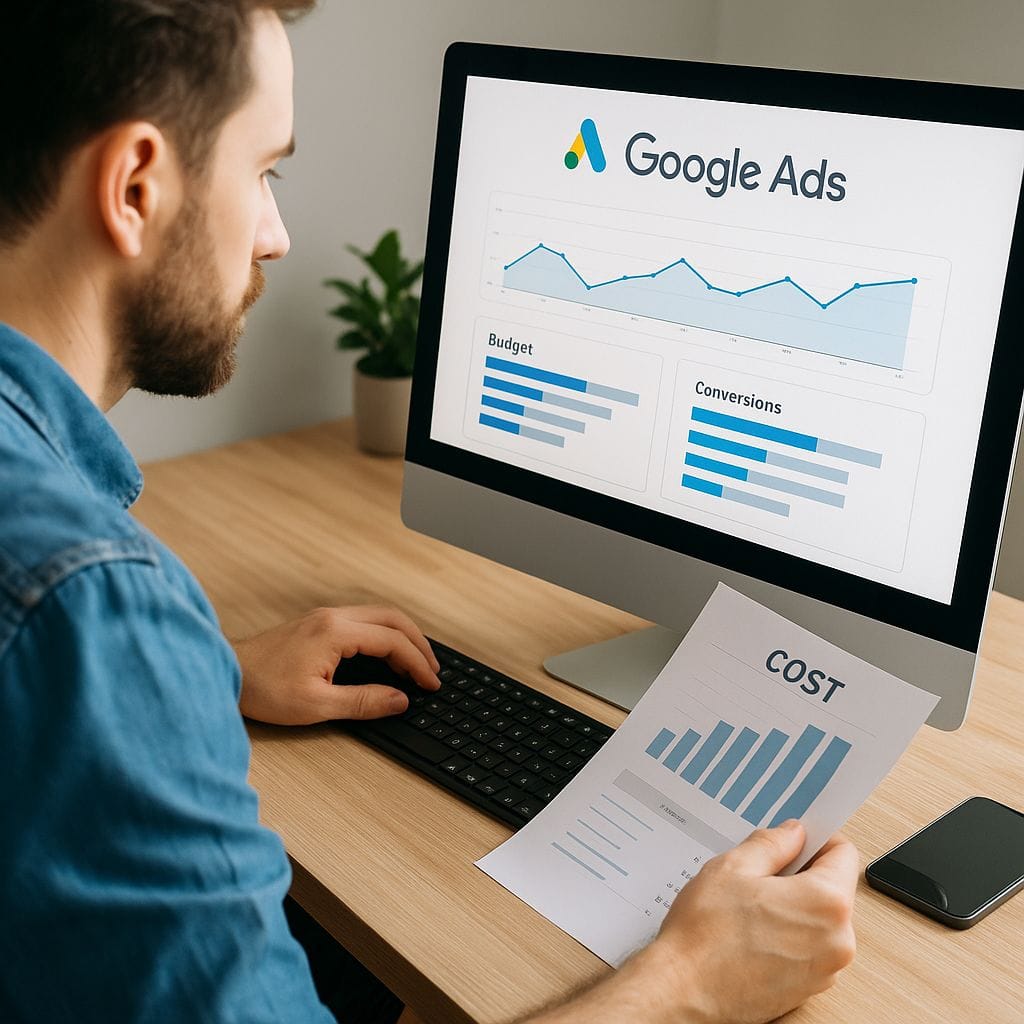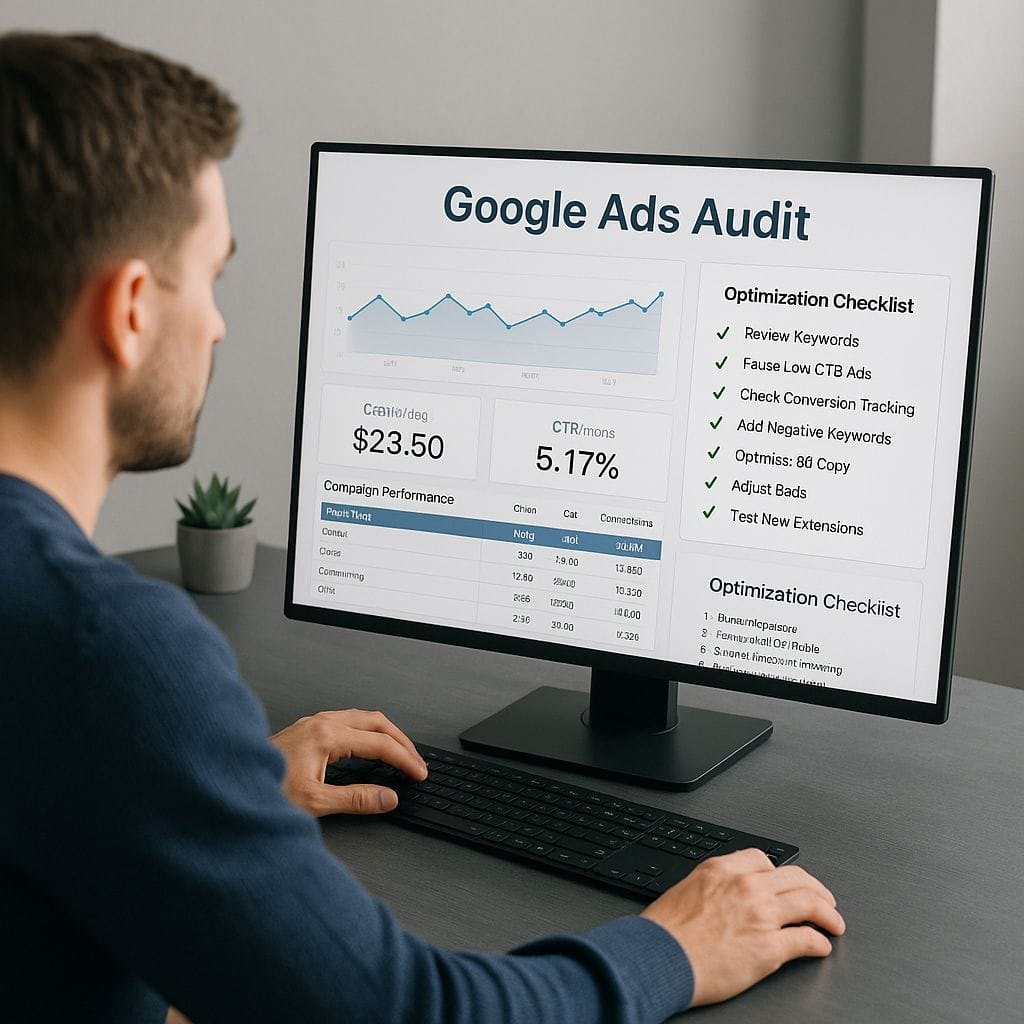Spending Without Results? Let’s Fix That.
Running Google Ads without ROI? You’re not alone. Countless businesses overspend due to weak structure, poor targeting, and zero budget control. This post reveals how to apply Google Ads budget optimization strategies that fix leaks, redirect spend, and improve performance.
As a 22x Google Ads Certified Expert, I’ve helped 60+ businesses stop wasting money—and start winning.
What You Will Learn:
Step 1 – Define Your Budget for Google Ads Optimization
The first step in Google Ads budget optimization is clarity.
Ask yourself:
- What’s your max cost per acquisition (CPA)?
- How many conversions do you need to be profitable?
- What’s your daily budget? (Monthly ÷ 30.4)
Don’t guess—build your Google Ads budget around break-even points.
Step 2 – Choose the Right Bidding for Budget Efficiency
One of the pillars of budget optimization in Google Ads is choosing the correct bidding strategy.
- Manual CPC + Enhanced CPC for control in the early stage
- Shift to Maximize Conversions or Target CPA after data accrues
🚫 Avoid Max Clicks unless your only goal is traffic.
Pro Tip: Don’t combine multiple goals in one campaign when optimizing for CPA or ROAS.
Step 3 – Identify Budget Drains That Sabotage ROI
Use your Google Ads Reports to audit performance, and to refine your Google Ads budget optimization process.
- Keywords with high cost and no conversions
- Ad groups with high CPCs and low CTR or Quality Score
- Devices or locations with poor ROI
Pause underperformers fast to preserve your budget.
Step 4 – Redirect Spend with Smart Adjustments
This is a critical tactic in Google Ads budget optimization that many businesses skip.
Apply bid adjustments for:
- Location (optimize by region or city)
- Device (mobile vs. desktop)
- Schedule (limit spend to high-converting hours)
This is a critical tactic in Google Ads budget optimization that many businesses skip.
Step 5 – Eliminate Wasteful Keywords Your Search Terms Report is your best friend.
Your Search Terms Report is your best friend.
Optimize by:
- Adding negative keywords weekly
- Removing irrelevant or low-intent queries
- Avoiding broad match terms that waste spend
Examples to block: “free”, “jobs”, “how to”, “DIY”
Step 6 – Segment Campaigns for Better Control
Segmenting lets you target, test, and control spend more effectively.
Create separate campaigns for:
- Top-performing services or products
- Different geo-locations
- Branded vs. non-branded search terms
This way, your budget flows to what performs—not what blends.
Step 7 – Review Budget Pacing Weekly
Be proactive with your budget.
Ask:
- Are we under or overspending by mid-month?
- Are campaigns limited by budget?
- Can funds shift to better-performing campaigns?
Fixing pacing is key to controlling Google Ads budget.
Final Thought: Optimize Before You Scale
Most Google Ads accounts can improve efficiency by 30–50% with the right changes.
Before you increase spend, fix the leaks. Structured budget optimization is the secret behind profitable campaigns.

📅Book a Free Budget Optimization Audit
Want me to audit your campaigns and show you where your money’s going? Book a free call.
🔍 Download: My Google Ads Budget Tracker Template(Coming Soon)
Track your cost, conversions, pacing, and wasted spend like a pro.
About the Author
UR Ads Partner
✅ 22x Google Ads Certified
💼 Budget Optimization & Performance Strategist
🌐 Helping Small Businesses Get More from Every Click – 22x Google Ads Certified Specialist
Internal Links:
🔗 Services | Google Ads Strategy | Home
🌐 External Links Suggestions:
- Link to Google Ads Help – Budget Recommendations
- Link to Google Ads Bidding Strategies
- Link to GA4 Setup for Ads Tracking
How often should I review my Google Ads budget?
At minimum, review your Google Ads budget every week. This lets you spot trends, avoid overspending, and reallocate budget where it’s most effective. Set reminders to stay in control.


